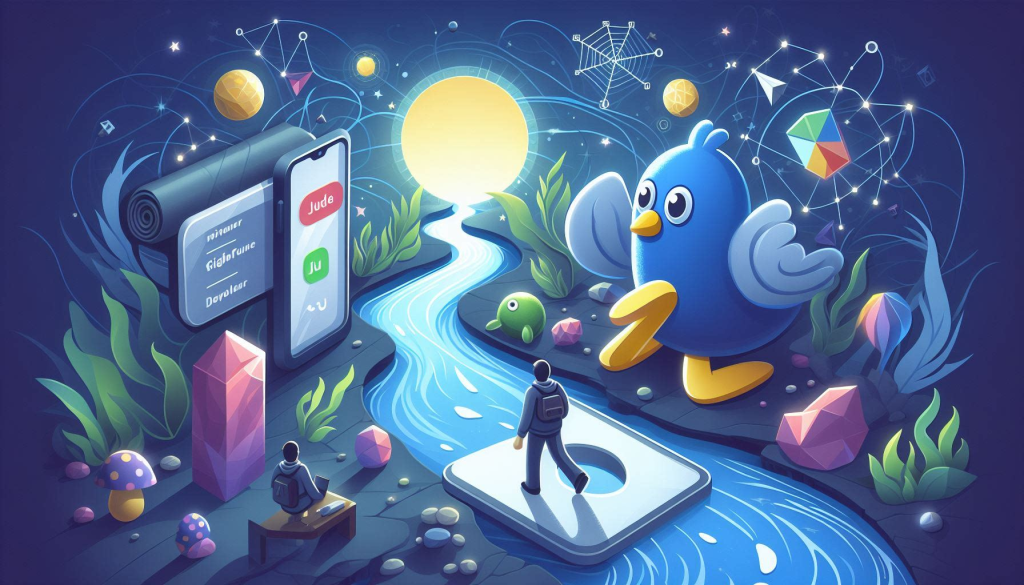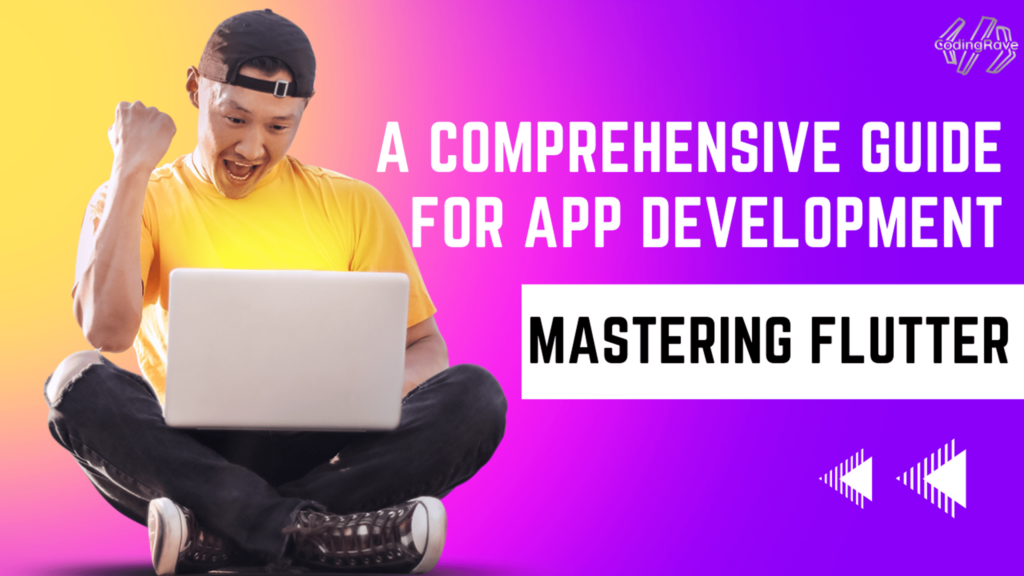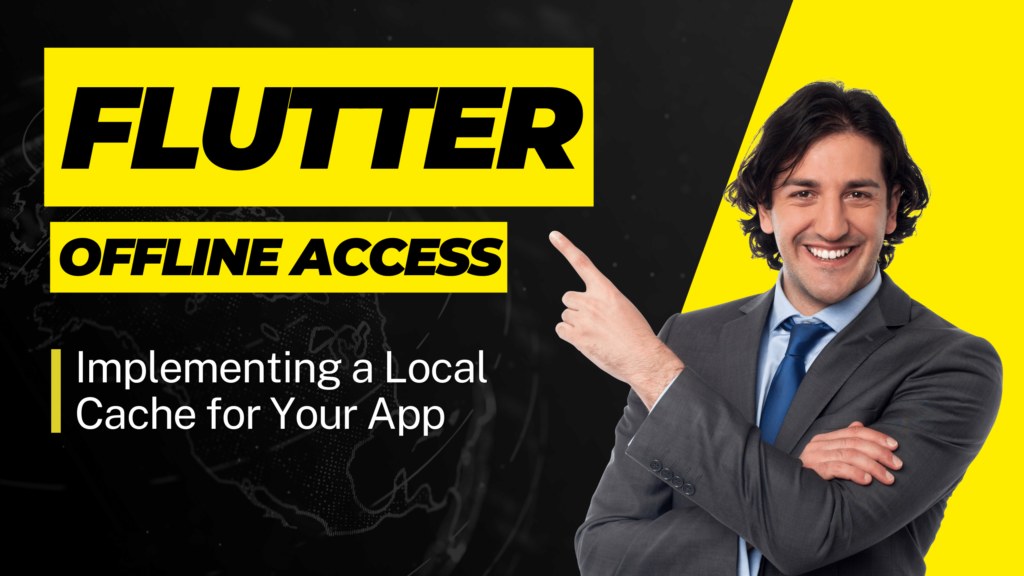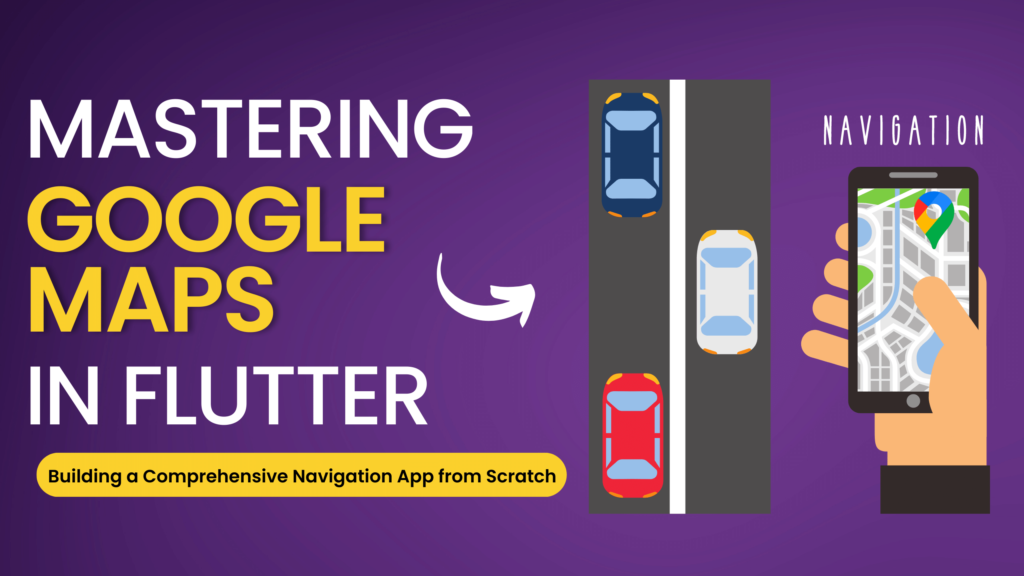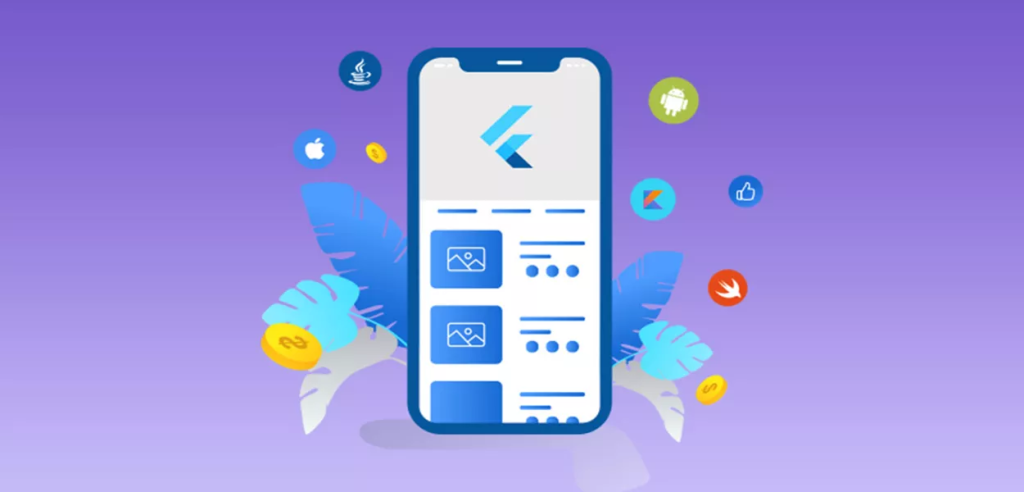Flutter has rapidly risen to prominence as a powerful framework for building beautiful, natively compiled applications from a single codebase. Developed by Google, it has become a go-to choice for developers aiming to craft high-quality apps for mobile, web, and desktop from a singular platform.
The significance of Flutter in mobile development is multifaceted. It offers a rich set of pre-designed widgets that enable the creation of complex UIs that are expressive and flexible. Moreover, its “hot reload” feature significantly speeds up the development process by allowing instant viewing of changes in code. Flutter’s reliance on the Dart programming language also ensures that developers can write more structured code for both the front-end and back-end, streamlining the development workflow.
The journey from a beginner to an expert in Flutter development is both challenging and rewarding. It begins with understanding the basics of Dart and the principles of declarative UI programming. As one progresses, mastering advanced concepts such as state management, animations, and platform-specific integrations becomes crucial. The path involves continuous learning and adapting to the evolving ecosystem, which includes staying abreast of the latest updates and best practices shared by the vibrant Flutter community.
Becoming an expert in Flutter opens up a world of opportunities. It allows developers to build high-performance, scalable applications that can reach users on multiple platforms with a consistent look and feel. The expertise in Flutter is not just about technical proficiency; it’s about embracing a mindset of innovation and excellence that can transform ideas into reality.
Understanding Flutter’s Core Principles
Deep Dive into Flutter’s Architecture
Flutter is designed as a layered, extensible system, where each layer is built upon the underlying one without privileged access, ensuring modularity and flexibility. At its core, Flutter includes the following architectural layers:
- Platform-specific embedders: These are written in a language appropriate for the platform (like Java/C++ for Android, Objective-C/C++ for iOS) and provide an entry point for the Flutter application. They manage the message event loop and integrate with services like rendering surfaces, accessibility, and input.
- Flutter Engine: Written primarily in C++, the engine is responsible for low-level rendering using Google’s Skia graphics library, as well as providing core libraries for animation, graphics, file and network I/O, and plugin architecture.
- Foundation Library: This includes the basic building blocks for writing Flutter applications, offering essential packages and written in Dart.
- Widgets: In Flutter, everything is a widget. Widgets are the fundamental UI components that describe immutable parts of the user interface. They are similar to React components and can include graphics, text, shapes, and animations.
- Design-specific Widgets: Flutter provides sets of widgets that conform to specific design languages like Material Design for Android and Cupertino for iOS.
The Importance of the Dart Programming Language in Flutter
Dart is the programming language used for developing Flutter applications. Its importance lies in several key aspects:
- Optimization for UI: Dart is optimized for building user interfaces, with features like the ‘hot reload’ that allows developers to see changes in real-time without restarting the app.
- Familiar Syntax: Dart’s syntax is familiar to developers from various backgrounds, making it easy to learn and use.
- Client-optimized: It is designed for fast app development on any platform, be it web, mobile, or desktop.
- Sound Null Safety: Dart provides sound null safety, ensuring that variables cannot be null unless explicitly declared.
- Rich Ecosystem: Dart comes with many built-in libraries and an excellent package manager, pub.dev, which enhances developer productivity.
- Declarative Layout: Dart’s declarative and programmatic layout allows developers to quickly and effortlessly visualize and build UIs.
In summary, Dart’s role in Flutter is foundational. It enables the creation of performant, visually appealing applications that can run on multiple platforms, and its language features support the development of complex, reactive UIs efficiently.
Advanced UI/UX Design in Flutter
Creating custom and advanced layouts and implementing sophisticated animations and transitions are crucial for crafting an engaging user experience in Flutter applications. Here’s how you can approach these advanced design elements:
Creating Custom and Advanced Layouts
- Understanding the Basics:
- Start with the fundamental layout widgets like
Container,Row,Column, andStack. - Utilize
ExpandedandFlexiblewidgets to create responsive designs that adapt to different screen sizes.
- Start with the fundamental layout widgets like
- Leveraging Advanced Widgets:
- Use
GridViewandListViewfor creating scrollable layouts that display data in grid or list formats. - Implement
AspectRatioto maintain the aspect ratio of widgets across different devices.
- Use
- Custom Layouts with
LayoutBuilder:- The
LayoutBuilderwidget allows you to create layouts that respond to parent widget constraints, enabling more dynamic and adaptive designs. - Use conditional statements within
LayoutBuilderto adjust properties based on screen size or orientation.
- The
- Responsive Design Techniques:
- Apply media queries and size classes to create layouts that look great on any device, from phones to tablets to desktops.
Implementing Sophisticated Animations and Transitions
- Flutter Animation Framework:
- Flutter’s animation framework provides a robust set of tools for creating smooth, sophisticated animations that improve the user experience.
- Tween Animations:
- Start with simple
Tweenanimations to interpolate between values over a set duration. - Use
AnimationControllerto manage the animation’s state and lifecycle.
- Start with simple
- Physics-based Animations:
- Implement physics-based animations for realistic motion effects, using Flutter’s physics-based animation system.
- Staggered Animations:
- Create complex, staggered animations that involve multiple animations running in sequence or overlap.
- Gesture-driven Animations:
- Integrate gesture-driven animations to respond to user interactions, making the app feel more intuitive and responsive.
- Hero and Shared Element Transitions:
- Use
Herowidgets to create shared element transitions between screens, providing a seamless user experience.
- Use
By combining these advanced layout and animation techniques, you can create a Flutter application that not only looks professional but also provides a delightful and intuitive user experience.
State Management and Performance Optimization
State Management Patterns
- Provider:
- A recommended approach for beginners due to its simplicity and minimal code requirement.
- It uses concepts that are common across various state management techniques.
- BLoC (Business Logic Components):
- Allows separation of business logic from UI, facilitating easier testing and reusability.
- Works on the principle of receiving a stream of events, processing them, and emitting states as outputs.
- Riverpod:
- Considered a more robust and testable version of Provider.
- Provides better control over the state and its management.
Best Practices for Optimizing App Performance
- Minimize Expensive Operations:
- Avoid costly operations in the
build()method, which can be frequently invoked. - Use const constructors where possible to allow Flutter to optimize the build process.
- Avoid costly operations in the
- Control Widget Rebuilds:
- Utilize the
shouldRebuildmethod to prevent unnecessary widget rebuilds. - Implement stateless widgets when the widget’s state does not need to change over time.
- Utilize the
- Performance Analysis Tools:
- Use profiling tools to identify and address performance bottlenecks.
- Regularly update Flutter to benefit from the latest performance optimizations.
By understanding and implementing these state management patterns and performance optimization techniques, you can ensure that your Flutter applications are both well-structured and performant.
Integrating with Backend Services
Integrating your Flutter application with backend services is a multi-faceted process that involves setting up RESTful APIs, utilizing web sockets for real-time communication, and leveraging cloud services for robust data storage and processing. Here’s a comprehensive guide to each aspect:
Setting up RESTful APIs
- Get the API URL and Endpoints:
- Identify the base URL and endpoints for the API you intend to use.
- Add Relevant Packages:
- Include packages like
http,dio, orchopperin yourpubspec.yamlfile to handle HTTP requests.
- Include packages like
- Create a Model Class:
- Define a model class to parse the JSON data into a usable format for your application.
- API Call Handling:
- Write functions to handle API calls, fetch data, and utilize the parsed data in your app.
Using Web Sockets
- WebSocket Connection:
- Use the
web_socket_channelpackage to establish a connection to a WebSocket server.
- Use the
- Listening for Messages:
- Implement a
StreamBuilderto listen for messages from the server and update your UI accordingly.
- Implement a
- Sending Data:
- Use the
sink.addmethod to send data to the server through the WebSocket channel.
- Use the
- Closing the Connection:
- Ensure to close the WebSocket connection when it’s no longer needed using
sink.close.
- Ensure to close the WebSocket connection when it’s no longer needed using
Leveraging Cloud Services
- Cloud Storage:
- Utilize Firebase’s Cloud Storage for storing user-generated content like images and videos.
- Set up security rules to manage access to the data stored in the cloud.
- Real-time Database and Firestore:
- Implement Firebase’s Realtime Database or Firestore for real-time data synchronization across devices.
- Authentication and Functions:
- Use Firebase Authentication for user management and Cloud Functions for serverless backend logic.
By integrating these backend services, your Flutter application can achieve seamless data synchronization, real-time communication, and secure data handling, providing a smooth and dynamic user experience.
Platform-Specific Code and Native Integrations
Writing platform-specific code in Flutter and integrating with native modules are advanced topics that allow Flutter apps to utilize platform-specific features and capabilities. Here’s a guide to understanding and implementing these concepts:
Writing Platform-Specific Code in Flutter
- Platform Channels:
- Use platform channels to communicate between Flutter and native code.
- This involves sending messages from the Flutter side (Dart) to the native side (Java/Kotlin for Android, Swift/Objective-C for iOS), which then calls the platform APIs and returns a response.
- Steps for Implementation:
- Create a new app project and set up the Flutter platform client.
- Add platform-specific implementations for Android, iOS, Windows, macOS, or Linux as needed.
- Use Pigeon for type-safe communication or create custom channels and codecs if necessary.
- Separating UI from Platform Code:
- Keep platform-specific code separate from UI code to maintain a clean architecture.
- Publish platform-specific code as a package if you plan to reuse it across different projects.
Integrating Flutter with Native Modules
- Using Existing Native Code:
- Integrate existing native code into your Flutter app by setting up platform channels.
- This is useful when you have legacy code or when you need to use platform-specific features not available in Flutter.
- Native SDKs:
- Incorporate native SDKs into your Flutter application to access device- or platform-specific features.
- Use platform channels to enable Flutter to send and receive messages to and from the native side of the app.
- MethodChannel and EventChannel:
- Utilize
MethodChannelto perform method calls andEventChannelto listen for native events. - Implement features that require platform-specific integration and test them on both iOS and Android.
- Utilize
By mastering these techniques, you can enhance your Flutter applications with features that require direct interaction with the underlying platform, providing a richer experience for users.
Testing Strategies in Flutter
- Unit Testing:
- Focuses on testing individual functions, methods, or classes.
- Ensures that the smallest components of the application run as expected.
- Commonly uses the
testfunction for implementation.
- Widget Testing:
- Also known as instrumentation testing, it focuses on UI components like buttons and text fields.
- Verifies that the UI is laid out and interacts with the user as designed.
- Integration Testing:
- Tests how multiple units work together and is also called end-to-end or GUI testing.
- Ensures that the entire app works as intended in different scenarios.
Advanced Debugging Techniques and Tools
- Expression Evaluation:
- Utilize expression evaluation during debugging to inspect and modify the state of the app.
- Breaking on Exceptions:
- Configure the debugger to pause when exceptions are thrown, allowing you to inspect the cause.
- Advanced Log Filtering:
- Implement advanced log filtering to focus on relevant data and streamline the debugging process.
- Using Observatory:
- Leverage Dart Observatory for a deeper dive into your app’s performance and memory usage.
By employing these testing strategies and advanced debugging techniques, you can ensure that your Flutter applications are robust, reliable, and maintain a high-quality user experience.
Deployment and Continuous Integration/Continuous Deployment (CI/CD)
Setting up Continuous Integration/Continuous Deployment (CI/CD) pipelines for Flutter apps is an essential step in ensuring efficient and reliable software delivery. Here’s a guide to help you with the process:
Setting up CI/CD Pipelines for Flutter Apps
- Choose a CI/CD Platform:
- Select a platform that supports Flutter, such as Codemagic, Bitrise, or GitHub Actions.
- Configure the Pipeline:
- Create a
.gitlab-ci.ymlor equivalent file in your project repository to define the pipeline stages. - Define stages for linting, testing, building, and deploying your Flutter app.
- Create a
- Automate Testing:
- Set up automated tests to run with every commit, ensuring code quality and stability.
- Build and Deployment:
- Configure the pipeline to automatically build the app and deploy to the Play Store or App Store upon successful testing.
- Manage Secrets and Keys:
- Securely store and manage API keys, credentials, and other secrets needed for building and deploying the app.
- Monitor and Maintain:
- Regularly monitor the pipeline for any issues and update the configurations as necessary.
Strategies for Efficient App Deployment and Updates
- Automated Rollbacks:
- Implement automated rollback mechanisms in case of deployment failures to maintain app stability.
- Feature Flags:
- Use feature flags to control the release of new features and facilitate A/B testing.
- Performance Monitoring:
- Utilize tools to monitor the app’s performance and quickly address any issues post-deployment.
- User Feedback Loops:
- Establish channels for collecting user feedback and incorporate it into the development cycle.
- Continuous Improvement:
- Adopt a mindset of continuous improvement, regularly updating the app with optimizations and new features.
By following these guidelines, you can set up a robust CI/CD pipeline that streamlines your Flutter app’s deployment process and ensures that updates are delivered efficiently and reliably to users.
Accessibility in Flutter Apps
Making your Flutter apps accessible is crucial to ensure they can be used by as many people as possible, including those with disabilities. Here are some key points to consider:
- Semantic Widgets:
- Use semantic widgets or the
Semanticswidget to annotate the UI with descriptions for screen readers.
- Use semantic widgets or the
- Text Size and Readability:
- Ensure text widgets respect the system’s font size settings to accommodate users with visual impairments.
- Contrast and Color:
- Maintain sufficient contrast ratios for text and interactive elements.
- Avoid using color as the only means of conveying information.
- Interactive Elements:
- Make sure all interactive elements are large enough to be easily tapped and provide feedback.
- Testing Tools:
- Utilize tools like the Accessibility Scanner for Android and the Accessibility Inspector for iOS to identify issues.
Internationalization (i18n) in Flutter Apps
Implementing internationalization allows your app to reach a global audience by supporting multiple languages. Here’s how to set it up:
- Locale Configuration:
- Configure the
supportedLocalesandlocalizationsDelegatesin yourMaterialApporCupertinoApp.
- Configure the
- Adding Localized Messages:
- Use the
intlpackage to manage localized messages and handle pluralization, dates, and numbers.
- Use the
- Localizing Content:
- Create
.arbfiles for each language you want to support, containing key-value pairs for all the translatable text.
- Create
- Testing Locales:
- Test your app with different locales to ensure that the layout and content adapt correctly.
By focusing on accessibility and internationalization, you can create Flutter apps that are inclusive and have the potential to engage users worldwide.
The Flutter Community and Resources
Contributing to the Flutter Community
Contributing to the Flutter community can be a rewarding experience, allowing you to connect with fellow developers, learn from the best, and give back to the ecosystem. Here are some ways to contribute:
- Code Contributions:
- Contribute to the Flutter framework or engine by submitting pull requests on GitHub.
- Help with existing samples or add new ones to improve documentation.
- Community Support:
- Assist others on Flutter mailing lists, chat channels, or Stack Overflow.
- Participate in triaging, reproducing, or fixing bugs reported by the community.
- Documentation:
- Enhance the Flutter documentation by adding guides, tutorials, or translations.
- Outreach and Events:
- Engage in outreach activities to promote Flutter.
- Attend or organize local meetups and international events.
- Feedback and Proposals:
- Provide feedback on the issue tracker and vote on proposals to shape the future of Flutter.
Staying Updated with the Latest Flutter Resources and Developments
To stay current with Flutter’s latest resources and developments, consider the following:
- Official Announcements:
- Follow the Flutter website and blog for updates and announcements.
- Join the flutter-announce Google group for breaking changes and news.
- Release Notes:
- Check out the Flutter SDK release notes for detailed information on new features and fixes.
- Community Blogs and Medium:
- Read community-contributed posts on platforms like Medium for insights and tutorials.
- Development Resources:
- Dive into the Flutter source code and explore well-documented, declarative code.
- Comprehensive Lists:
- Access lists of articles, videos, courses, and repositories dedicated to Flutter development.
By actively participating in the community and keeping abreast of the latest developments, you can enhance your skills, contribute to the growth of Flutter, and stay informed about the advancements in this dynamic framework.
Conclusion
Throughout this article, we’ve embarked on an in-depth exploration of advanced Flutter development topics. We’ve delved into the intricacies of Flutter’s architecture, the pivotal role of the Dart programming language, and the art of crafting advanced UI/UX designs. We’ve navigated through the complexities of state management patterns like Provider, BLoC, and Riverpod, and underscored the importance of performance optimization.
We’ve also examined the integration of backend services, including RESTful APIs and web sockets, and the utilization of cloud services for data storage and processing. The discussion extended to writing platform-specific code and integrating native modules, ensuring that our Flutter apps can harness the full potential of the underlying platforms.
Testing and debugging were highlighted as critical phases in the development process, with strategies for unit, widget, and integration testing, as well as advanced debugging techniques and tools. Deployment practices, particularly the setup of CI/CD pipelines, were outlined to facilitate efficient app updates and releases.
Accessibility and internationalization were identified as key considerations for creating inclusive apps with a global reach. Finally, we emphasized the value of engaging with the Flutter community and staying updated with the latest resources and developments.
As we conclude, it’s important to recognize that the journey to mastering Flutter is ongoing. The landscape of technology is ever-evolving, and so is Flutter. Continuous learning, experimentation, and adaptation are essential. Embrace the challenges and opportunities that come with advanced Flutter development, and let your passion for innovation and excellence be the driving force behind your endeavors.
Keep coding, keep learning, and keep pushing the boundaries of what’s possible with Flutter. Your journey to expertise is just beginning, and the future is bright with possibilities. 🚀

